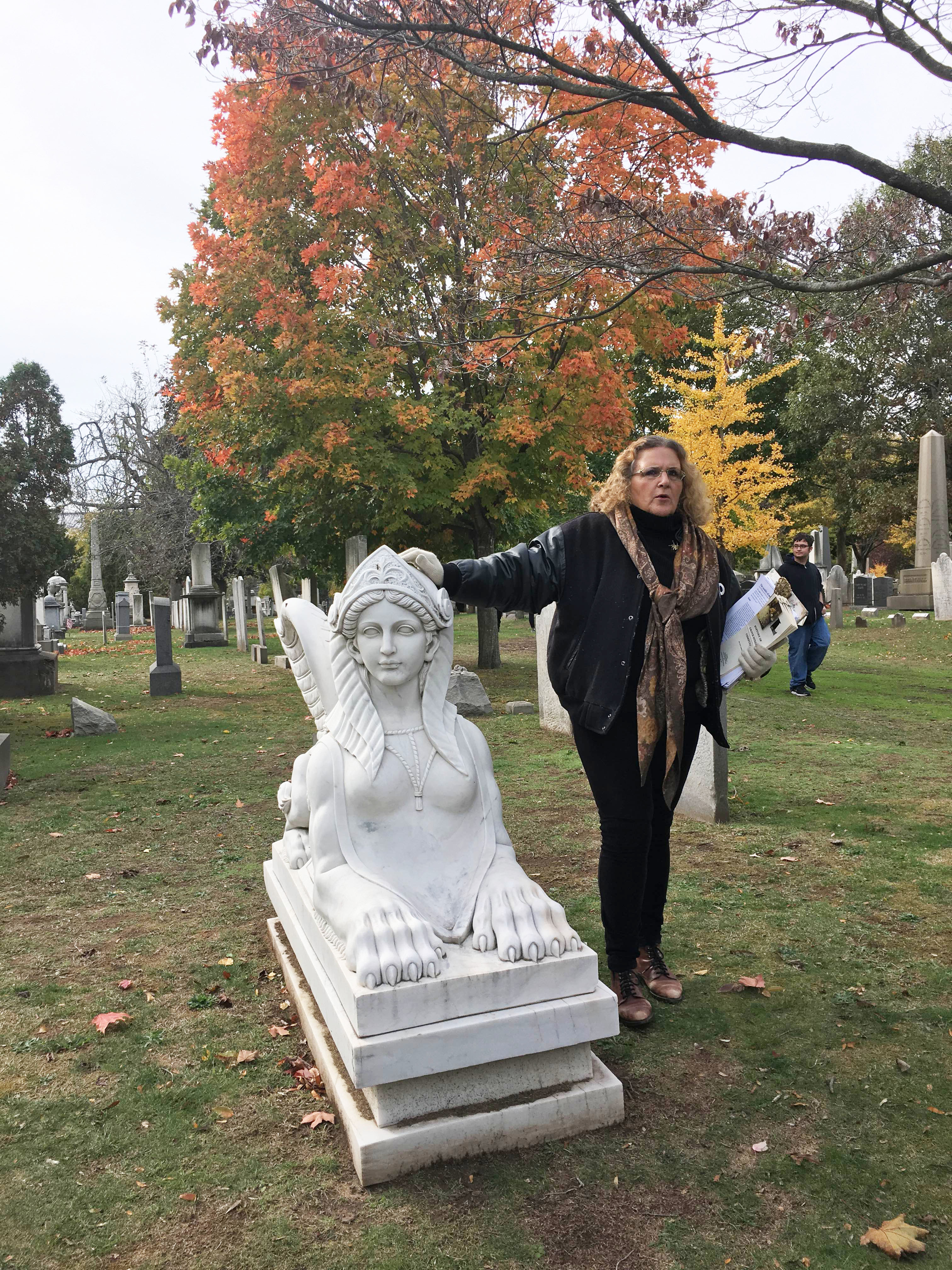
Anastasiia Posnova
On Saturday of Halloweekend, members of the New Haven community and tourists were invited to learn about the city’s history, but with a twist — they had to tour New Haven’s Grove Street Cemetery.
The tour, led by Patricia Illingworth, a member of the board of directors of Friends of the Grove Street Cemetery Inc. and a chief docent of the cemetery, taught attendees about New Haven’s history and the notable individuals buried in the town, as well as some spooky Elm City facts. Illingworth said proprietors from Amsterdam who came to the region and founded the city in 1638 buried their dead underneath what is now the New Haven Green, and that Grove Street Cemetery only opened in 1797.
“Around 1840, we decided to take the headstones off of the Green and move them into the cemetery to be placed with their family,” Illingworth said during the tour. “Now, that doesn’t mean the bodies were moved. … So what I’m telling you is: On the Green, there are about 20,000 bodies left. They’re still there. So when you come into New Haven, and you walk on the Green, step lightly.”
The cemetery’s establishment was groundbreaking in several ways. According to Illingworth, New Haven’s cemetery is especially interesting for three reasons: It is the oldest incorporated cemetery in the country, it was the first to have a park-like atmosphere and its burial ground is composed of family plots — parts of the cemetery that are sectioned off so that relatives can be buried alongside each other.
Illingworth then introduced the peculiar tombs found in the cemetery, such as metal tumuli — tombs in which bodies are protected by a curved piece of iron placed over the graves. Illingworth said that in the past, residents worried that the bodies of their loved ones would be taken from the cemetery by body snatchers, such as doctors who needed bodies to conduct experiments.
“There was an urban legend that the city of New Haven had underground tunnels to the cemetery through which people could take bodies,” Illingworth said. “The only reason why they thought that, though, was because Sheffield-Sterling-Strathcona Hall used to house Yale medical school, and people thought that doctors would steal bodies when they really didn’t.”
Illingworth also pointed out the graves of several famous individuals. For example, the cemetery houses the grave of Roger Sherman, who was the only founding father to sign the country’s four founding documents: the Declaration of Independence, the Articles of Confederation, the Constitution and the Continental Association. Sherman’s original tombstone is a five-legged table: four on the perimeter for each document signed and one in the center to commemorate his tenure as the first mayor of New Haven. Cemetery tables, Illingworth explained, are usually reserved for the graves of distinguished persons.
But the cemetery contains more than the bones of New Haven figures: Since Gen. George Washington had headquarters in the city of New Haven, Illingworth explained, the city was frequented by Aaron Burr, Alexander Hamilton and Andrew Jackson, among others.
“We also have Pierpont Edwards here — the first [Grand] Master of masons [in Connecticut],” she said. “Every soldier buried here from the American Revolution era is a mason. After the American revolution … Lafayette himself came into the city of New Haven … and came to the cemetery to pay homage to every single soldier.”
Other well-known people buried at the Grove Street Cemetery include Noah Webster, class of 1778, the author of the famous dictionary, and Eli Whitney, class of 1792, the inventor of the cotton gin. Many Yale-affiliated individuals — such as Timothy Dwight, Benjamin Silliman, Ezra Stiles and Theodore Dwight Woolsey — also rest in the cemetery.
The tour was well-received by the group of nearly 30 attendees.
Olivia Carney, a citizen of New Haven, said she thought the tour was fantastic and enjoyed learning more about different styles of tombstones. Hope Langer-Marshall, a visitor from Plainville concurred and said she thought the tour was eye-opening to the history of New Haven and that she enjoyed finding out more about the burials in the city before the cemetery was opened.
The Grove Street Cemetery is the ninth National Historic Landmark in the city of New Haven.







